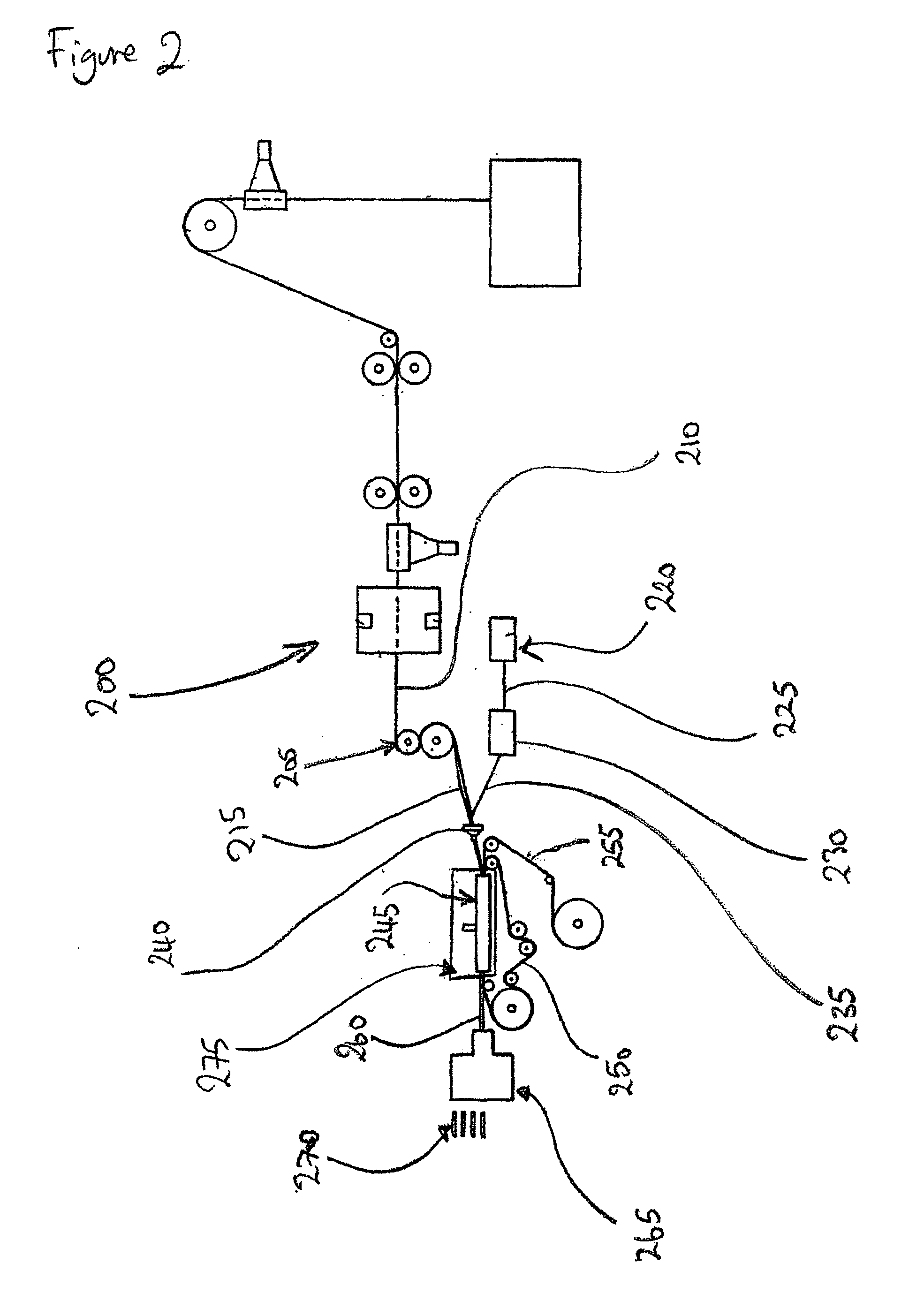Insertion Method for Centered Thread in Filter Rod
a technology of filter rods and threads, which is applied in the field of rod insertion, can solve the problems of inaccurate placement of threads inside the filter rods, low accuracy, and prone to being off-center, and achieve the effect of accurate placement and high loading level
- Summary
- Abstract
- Description
- Claims
- Application Information
AI Technical Summary
Benefits of technology
Problems solved by technology
Method used
Image
Examples
Embodiment Construction
[0041]With reference to FIG. 1: The rod (100) of the present invention has a first end (105) and a second end (110). The rod has located therein a solid support (115). The solid support (115) extends in a linear fashion from the first end (105) of said rod to the second end of said rod (110). At least a portion of said solid support is coated and / or impregnated with an additive (not shown).
[0042]With reference to FIG. 2: The prior art apparatus (200) comprises means (205) for providing tow (210). The tow (210) is bloomed (215). The apparatus (200) comprises means (220) for delivering a thread (225). The thread (225) passes through means (230) for contacting the thread (225) with menthol (not shown). The treated thread (235) then joins the tow (215) before passing through funnel (240). The apparatus also comprises rod forming means (245)—which comprises a conveyor belt (250) onto which is located paper (255). The covered rod (260) then passes through cutting means (265) to form small...
PUM
 Login to View More
Login to View More Abstract
Description
Claims
Application Information
 Login to View More
Login to View More - R&D
- Intellectual Property
- Life Sciences
- Materials
- Tech Scout
- Unparalleled Data Quality
- Higher Quality Content
- 60% Fewer Hallucinations
Browse by: Latest US Patents, China's latest patents, Technical Efficacy Thesaurus, Application Domain, Technology Topic, Popular Technical Reports.
© 2025 PatSnap. All rights reserved.Legal|Privacy policy|Modern Slavery Act Transparency Statement|Sitemap|About US| Contact US: help@patsnap.com



